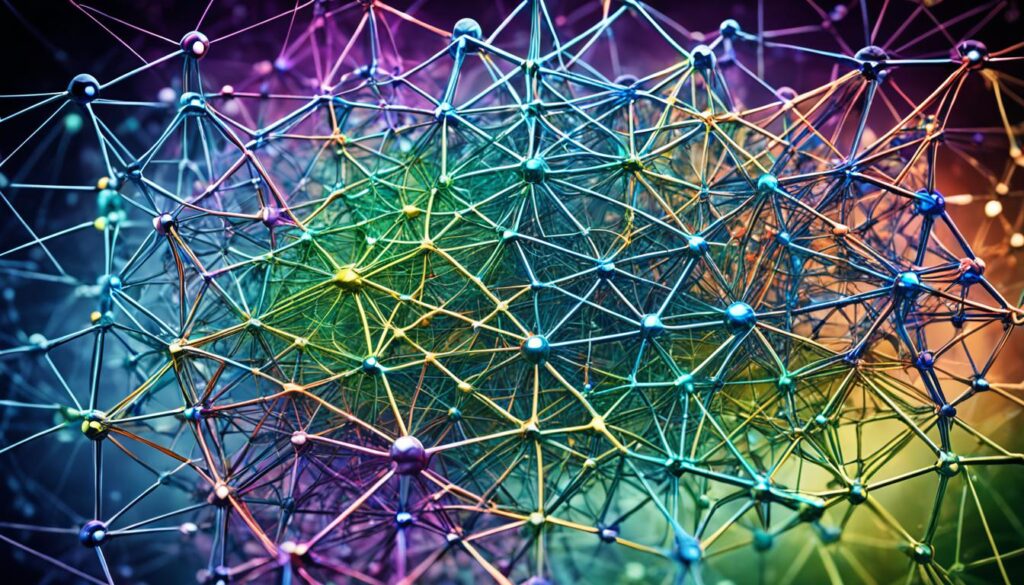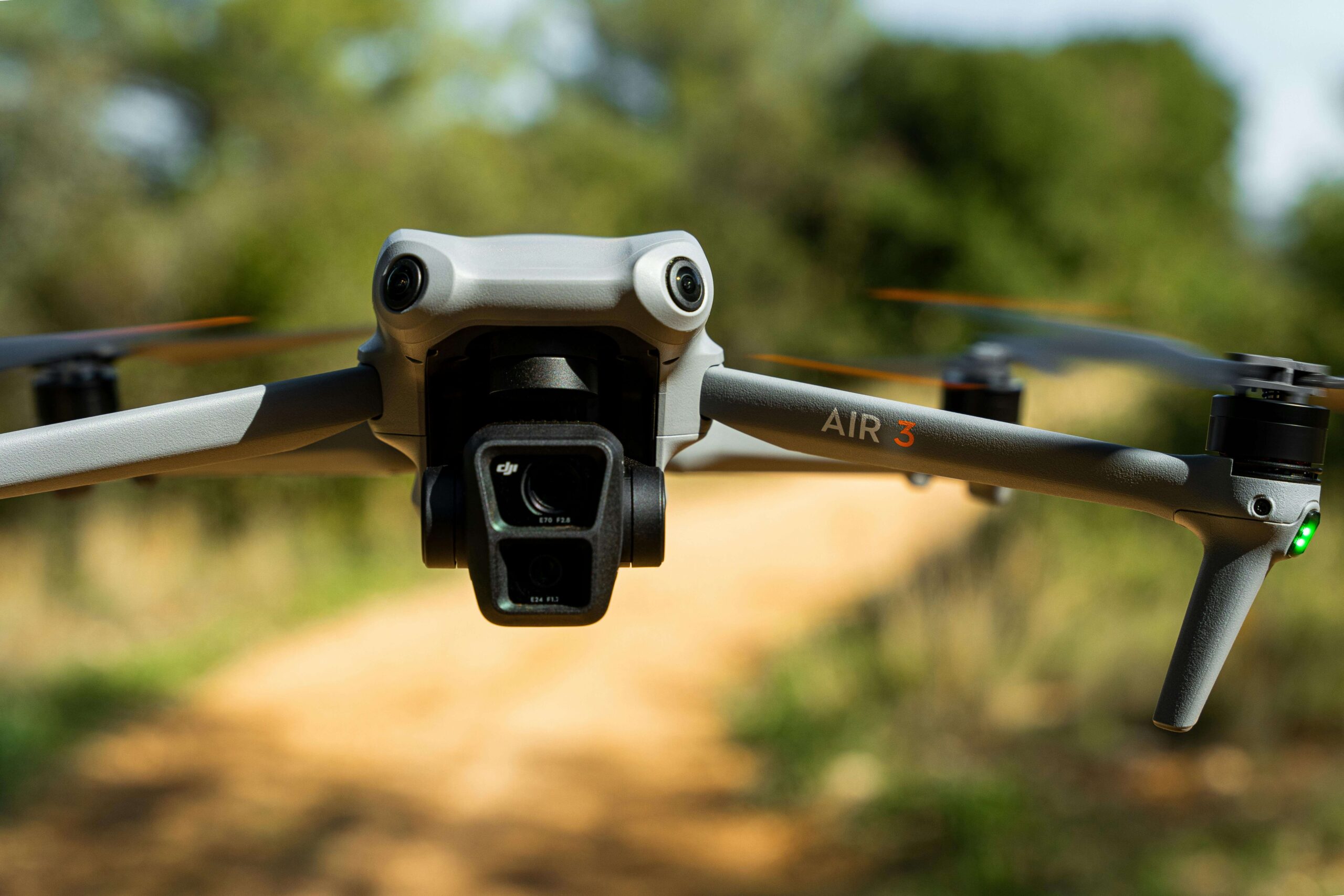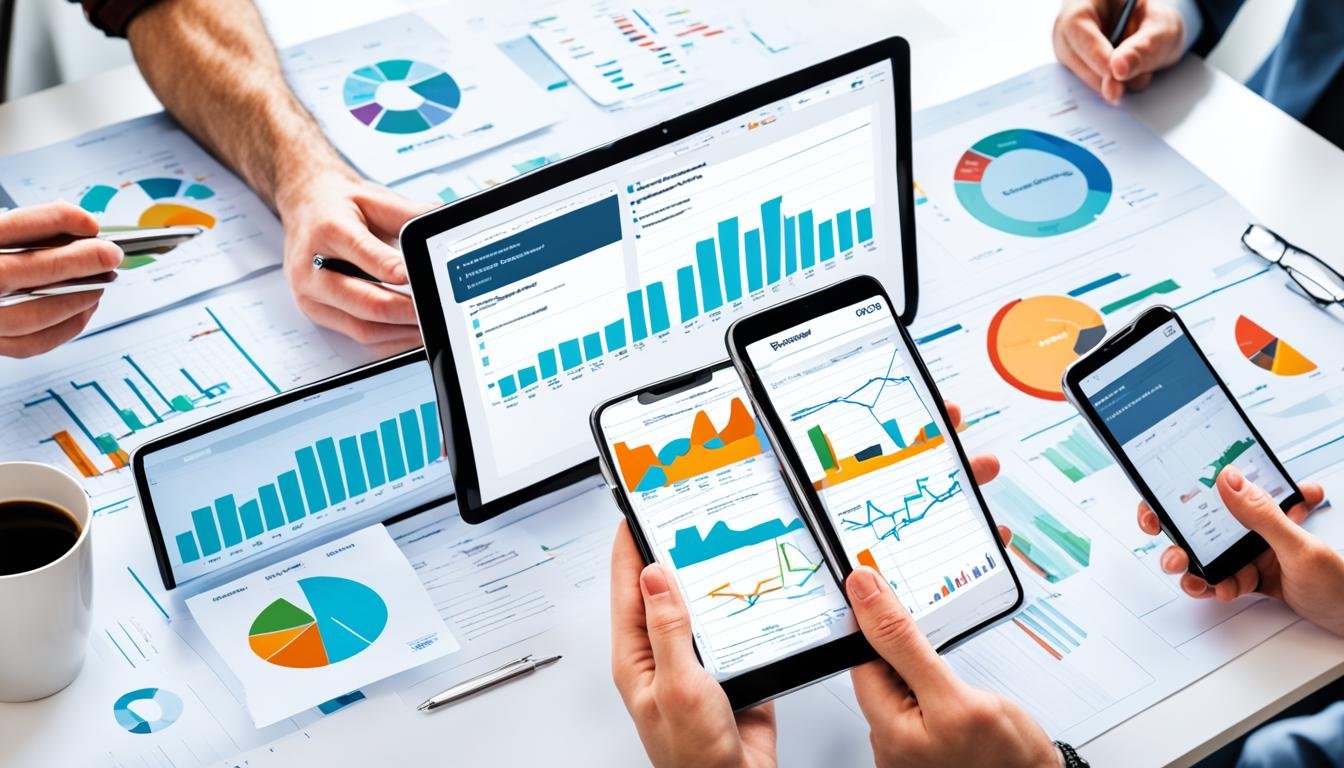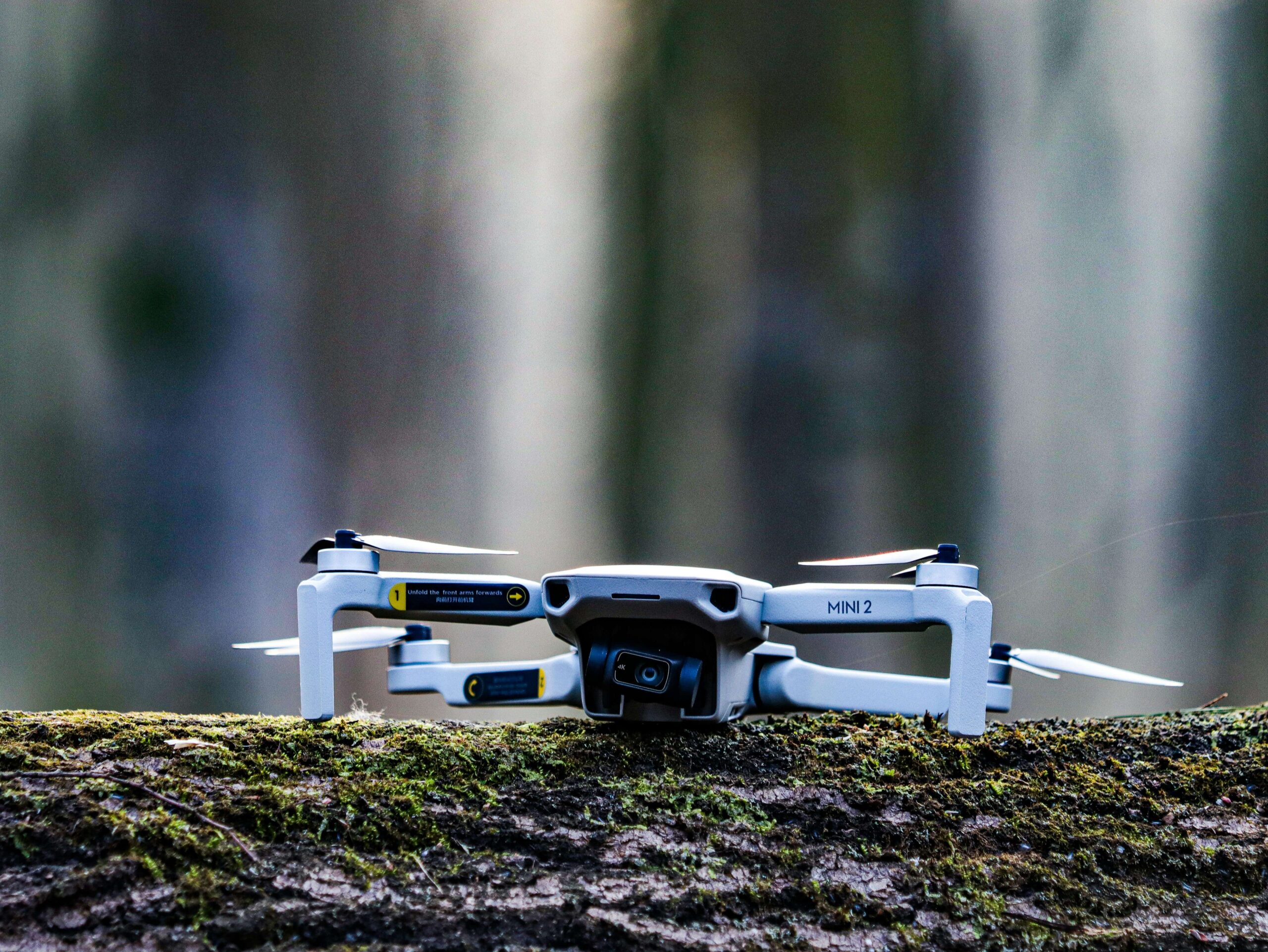Welcome to the beginner’s guide to quantum computing! This article is your introduction. We’ll dive into the principles that make quantum computing groundbreaking. If you’re new or seeking deeper knowledge, you’ll find key insights here.
Quantum computing marks a vast leap over traditional computers. While classical computers use bits (0s and 1s), quantum computers work with qubits. This allows them to solve complex problems very quickly. Grasping these basics is vital as quantum computing begins to change many industries, like finance and healthcare.
Key Takeaways
- Quantum computing is a revolutionary advancement in technology distinct from classical computing.
- Qubits are the fundamental units of quantum information, allowing for complex computations.
- Quantum computing principles include superposition and entanglement, which enable powerful problem-solving capabilities.
- Understanding the basics is essential for navigating and leveraging quantum computing advancements.
- This guide aims to provide essential insights for beginners.
What Is Quantum Computing?
Quantum computing is a new area of study. It uses quantum mechanics’ rules to do what older computers can’t. This new way of computing can change the game in things like code breaking, detailed simulations, and solving hard problems.
Understanding Quantum Computation
Quantum computation is all about superposition and entanglement. Superposition lets quantum bits, or qubits, be in many states at once, not just 0 or 1. Entanglement means qubits are linked. When one qubit’s state changes, another qubit’s state can change instantly, no matter the distance between them.
These special traits let quantum computers do many calculations at once. This could make solving complex problems much faster than before.
Classical vs. Quantum Computers
It’s important to know how classical and quantum computing differ. Classical computers use bits and work in a straightforward way. Quantum computers use qubits, tackling lots of data at once. This key difference means quantum computers can handle specific tasks much more effectively.
| Aspect | Classical Computers | Quantum Computers |
|---|---|---|
| Unit of Information | Bit | Qubit |
| State | Binary (0 or 1) | Superposition (0, 1, or both) |
| Parallelism | Sequential Processing | Parallel Processing |
| Entanglement | Not possible | Possible |
| Applications | General computing tasks | Advanced cryptography, complex simulations, optimization |
The differences highlight quantum technology’s huge potential. It could change many fields by solving problems we can’t tackle now.
The Basics of Qubits
Qubits, or quantum bits, are the fundamental info units in quantum computing. They’re different from classical bits. Classical bits are either 0 or 1. But qubits can be 0, 1, or both because of superposition. This makes quantum computers very powerful.
What Are Qubits?
Qubits, short for quantum bits, work with quantum mechanics rules. They use superposition and entanglement to do things classical computers can’t. Superposition lets qubits be in many states at once. Entanglement links the state of one qubit to another, no matter the distance. These traits help show why qubits are so versatile and powerful.
Qubit Technology Explained
Qubit technology is a big leap forward from classical computing. It uses quantum phenomena. We can make qubits in several ways, like trapped ions, superconducting circuits, and quantum dots. These methods help us control qubits precisely, which is key for quantum computing. We often use laser pulses or microwave signals for this control. Scientists are always trying to make these processes better.
| Qubit Type | Representation | Pros | Cons |
|---|---|---|---|
| Trapped Ions | Atomic ions in electromagnetic fields | High fidelity, long coherence times | Complex infrastructure |
| Superconducting Circuits | Superconductor-based circuits | Scalable, fast operation | Shorter coherence times |
| Quantum Dots | Electron spins in semiconductor material | Scalable, easily integrable | Requires low temperatures |
Quantum Algorithms: An Introduction
Quantum computing transforms how we solve problems with quantum algorithms. These algorithms use quantum mechanics to work at incredibly fast speeds. They make it possible to tackle complex issues that normal computers can’t handle. Understanding these algorithms opens up vast possibilities across different sectors.

How Quantum Algorithms Work
Quantum algorithms use unique properties like superposition and entanglement. This lets them process data in a new way. Unlike traditional methods, they can look at multiple solutions at once. This makes finding the right answer much faster. With qubits and quantum gates, they can do many calculations together, speeding up the process.
Examples of Quantum Algorithms
There are key quantum algorithms that show what quantum computing can do. Shor’s Algorithm is one, able to break large numbers down way faster than classic methods. This has big effects on making and breaking codes used online.
Grover’s Algorithm is another example, it searches databases much quicker. This is great for things like finding information or solving complex problems fast. These algorithms could change industries like banking and health care. The work to improve and understand these algorithms is ongoing.
| Algorithm | Function | Applications |
|---|---|---|
| Shor’s Algorithm | Integer factorization | Cryptography, Cybersecurity |
| Grover’s Algorithm | Unsorted database search | Data mining, Optimization |
For more on managing privacy with quantum computing, check out this privacy policy.
Getting Started with Quantum Programming
If you’re new to quantum computing, getting started can be exciting. You’ll want to learn about quantum programming languages. These tools help you code for quantum computers. We’ll show you the first steps in learning quantum programming.
“Quantum computation is the next frontier in the ever-evolving landscape of technology, and learning to program quantum computers is a critical skill for future tech leaders.”
Starting out, you’ll come across several languages made for quantum software development. Check out some popular ones:
- Qiskit: An open-source quantum computing software development framework by IBM.
- Cirq: Developed by Google, this framework is ideal for creating and studying quantum circuits.
- Q#: Microsoft’s quantum programming language offers extensive libraries and tools for developing quantum algorithms.
| Programming Language | Developer | Description |
|---|---|---|
| Qiskit | IBM | An open-source framework that allows you to code for quantum computers and run them on IBM’s quantum machines. |
| Cirq | A Python library created to work with and simulate quantum circuits, facilitating research and educational projects. | |
| Q# | Microsoft | A full-featured quantum programming language integrated into the Microsoft Quantum Development Kit, offering tools for quantum software development. |
Learning these quantum programming languages is a great start. They help you understand quantum mechanics and use it in your codes. Tools like Qiskit, Cirq, and Q# each have unique features for quantum development.
By learning these languages, you’re on your way. You’ll be ready for coding quantum computers. This sets a strong base for advanced quantum algorithms and future projects.
Understanding Quantum Circuits
To really use quantum computing, we need to know how quantum circuits work. These circuits are vital for quantum computing. They let complex quantum algorithms run correctly.
Components of Quantum Circuits
Quantum circuits are made of key parts that work together. Here are the main ones:
- Qubits: The basic unit of quantum information, represented by quantum bits.
- Quantum Gates: Operations that change the state of qubits, akin to classical logic gates.
- Measurement Devices: Tools used to observe and record the quantum state of qubits.
Building Simple Quantum Circuits
Starting with simple circuits is a good first step. It helps understand the basics. Here’s how you can begin:
- Select your qubits: Choose the number of qubits needed for your quantum circuit design.
- Apply quantum gates: Use gates like the Hadamard gate or the Pauli-X gate to manipulate the qubits.
- Prepare for measurement: Set up measurement devices to record the final state of your qubits after gate operations.
Designing quantum circuits means knowing these parts and using quantum gates wisely for your goals.
| Component | Function |
|---|---|
| Qubits | Store quantum information |
| Quantum Gates | Modify qubit states |
| Measurement Devices | Observe qubit states |
The Role of Quantum Gates in Computation
Quantum gates are vital for quantum circuits and computation. They control qubits, unlike traditional gates that handle bits. This lets them perform complex calculations that are impossible for classical computers. Exploring quantum gates is key for anyone interested in quantum computing.
Types of Quantum Gates
There are various quantum logic gates, each with its own role. Some of the key ones include:
- Hadamard Gate (H): It generates a superposition, changing a qubit from a certain state to a mix of 0 and 1.
- Pauli-X Gate (X): Like the classical NOT gate, the Pauli-X gate reverses a qubit’s state.
- Controlled-NOT Gate (CNOT): This important two-qubit gate, the CNOT, changes the second qubit’s state based on the first one. It makes entanglement possible.
How Quantum Gates Operate
Quantum gates change qubits with unitary transformations, which can be undone. They adjust the qubit’s condition using special math.
For example, a Hadamard gate alters the qubit’s state to allow it to be in several states at once. Meanwhile, the CNOT gate is crucial for quantum algorithms, making qubits interact. These gates help quantum computers do advanced calculations fast.
| Quantum Gate | Function | Operation |
|---|---|---|
| Hadamard Gate (H) | Creates superposition | Transforms qubit into a combination of 0 and 1 |
| Pauli-X Gate (X) | Inverses state | Flips qubit’s state from 0 to 1 or vice versa |
| CNOT Gate | Enables entanglement | Inverts second qubit based on the first qubit’s state |
Quantum Superposition and Its Implications
The quantum superposition principle is a fascinating idea in quantum computing. It explains how qubits can be in many states at once. Unlike normal bits that are just 0 or 1, qubits can be both 0 and 1 at the same time.
Quantum computers get their amazing power from being in multiple states. With superposition in quantum computing, they can do jobs in minutes that would take regular computers thousands of years. A quantum computer can look at many solutions at once, rather than one by one.
The implications of superposition are huge, more than just speed. It changes how we solve problems. It leads to new algorithms for complex tasks, better financial models, improved machine learning, and upgraded supply chain logistics.
| Classical Computer | Quantum Computer |
|---|---|
| Processes bits in states of 0 or 1 | Processes qubits in states of 0, 1, or both simultaneously |
| Sequential problem solving | Parallel processing through superposition |
| Longer computation times for complex problems | Exponential speed-up for certain computations |
The superposition in quantum computing is a game-changer. As experts delve deeper into the implications of superposition, the tech world’s future is exciting. We’re looking at progress that seemed possible only in sci-fi before.
Exploring Quantum Entanglement
Quantum entanglement is a mind-blowing event where particles act in unison. One particle instantly impacts another, no matter the distance. This phenomenon stretches our usual thoughts on space and cause.
What Is Quantum Entanglement?
Essentially, quantum entanglement is about particles acting together in a special way. They remain linked despite being far apart. When one changes its state, the other does too, instantly.
Applications of Quantum Entanglement
Quantum entanglement’s uses are wide and revolutionary. Here are some examples:
- Quantum Cryptography: Entangled states create secure communication like never before.
- Quantum Teleportation: This allows instant information transfer across vast distances, key for future networks.
- Quantum Computing: It’s crucial for fast computations, allowing complex tasks to be done quickly.
The use of quantum entanglement is changing our world. As we explore it more, we will surely find new breakthroughs. These advancements will transform how we interact with technology.
The Future of Quantum Computing
The future of quantum technology is set to change our world. It offers huge promise in many areas. One big hope is advancements in quantum computers. These could give us more power for research, improving security, and advancing AI.

Soon, quantum computing may greatly impact fields like healthcare and finance. For instance, it could tackle tough problems regular computers can’t. This includes making supply chains better or speeding up drug discovery.
Now, let’s look at some exciting future possibilities and what they could mean:
| Advancement | Potential Application |
|---|---|
| Quantum Simulations | Drug discovery and materials science |
| Quantum Cryptography | Enhancing data security and privacy |
| Quantum Machine Learning | Improving pattern recognition and data analysis |
These possible breakthroughs in quantum computing are thrilling. They could lead us into a new era of technology. To achieve this, it’s important to keep researching and working together.
Conclusion
As this beginner’s guide to quantum computing ends, let’s summarize what we’ve learned. We compared quantum computation to traditional computing. We explored qubits, quantum algorithms, and quantum gates’ roles.
We discovered how quantum circuits work. We also learned about quantum superposition and entanglement. These ideas are crucial for understanding quantum tech’s power.
If you want to learn more, consider courses or projects in quantum computing. For info on courses and their policies, click here.
This guide offered a strong basis in quantum computing, from basics to complex topics. As technology grows, keep up your learning and discovery. This is just the start of your quantum computing journey. We hope you’re now more motivated to dive deeper into the field.
FAQ
What is quantum computation?
Quantum computation leverages quantum mechanics for computing. It’s different from classical computing, which uses bits. Quantum bits, or qubits, play a key role because they can be in more than one state thanks to quantum superposition. This unique feature could make solving complex problems faster and more efficient.
How do qubits differ from classical bits?
Unlike classical bits, which are either 0 or 1, qubits can be both at the same time because of quantum superposition. Quantum entanglement also lets qubits connect in unique ways. This makes quantum computation more powerful for certain problems.
What types of quantum gates are there?
In quantum computing, gates like the Hadamard, CNOT, and Pauli-X are crucial. Hadamard gates create superposition. CNOT gates entangle qubits. Pauli-X gates work similarly to classical NOT gates but for qubits. They all support quantum algorithms and calculations.
Can you give examples of quantum algorithms?
Sure. Shor’s algorithm can break down large numbers much faster than current classical methods, impacting cryptography. Grover’s algorithm improves speed for searching databases. Both show quantum computing’s potential.
What are the practical applications of quantum entanglement?
Quantum entanglement offers secure communication through quantum cryptography. It’s thought to be safe from eavesdropping. Quantum teleportation is another application. It allows instant transfer of a qubit’s state without physical movement.
How do I get started with quantum programming?
Starting with quantum programming involves learning languages like IBM’s Qiskit or Microsoft’s Q#. These allow design and implementation of quantum algorithms. Online resources offer tutorials and courses to help beginners.
What are the components of quantum circuits?
Quantum circuits include qubits, gates, and measurement devices. Qubits start in a set state. Gates apply operations. Measurement devices capture the outcome. These parts are crucial for quantum algorithms.
What is the principle of quantum superposition?
The principle states a quantum system can exist in multiple states at once. This means a qubit can be both 0 and 1. Superposition allows quantum computers to explore many options simultaneously, boosting their power.
What is expected for the future of quantum computing?
The outlook for quantum computing is bright, with advancements likely in hardware to improve performance. Quantum computers might solve problems too complex for current computers. Fields like pharmaceuticals, logistics, and finance could see major benefits.







